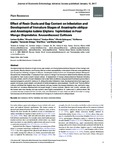Por favor, use este identificador para citar o enlazar este ítem:
http://www.alice.cnptia.embrapa.br/alice/handle/doc/1066680Registro completo de metadatos
| Campo DC | Valor | Lengua/Idioma |
|---|---|---|
| dc.contributor.author | GUILLÉN, L. | pt_BR |
| dc.contributor.author | ADAIME, R. | pt_BR |
| dc.contributor.author | BIRKE, A. | pt_BR |
| dc.contributor.author | VELÁZQUEZ, O. | pt_BR |
| dc.contributor.author | ANGELES, G. | pt_BR |
| dc.contributor.author | ORTEGA, F. | pt_BR |
| dc.contributor.author | RUIZ, E. | pt_BR |
| dc.contributor.author | ALUJA, M. | pt_BR |
| dc.date.accessioned | 2017-03-10T11:11:11Z | pt_BR |
| dc.date.available | 2017-03-10T11:11:11Z | pt_BR |
| dc.date.created | 2017-03-10 | pt_BR |
| dc.date.issued | 2017 | pt_BR |
| dc.identifier.citation | Journal of Economic Entomology, p. 1-12, Jan. 2017. | pt_BR |
| dc.identifier.uri | http://www.alice.cnptia.embrapa.br/alice/handle/doc/1066680 | pt_BR |
| dc.description | We determined the influence of resin ducts, sap content, and fruit physicochemical features of four mango cultivars (Criollo, Manila, Ataulfo, and Tommy Atkins) on their susceptibility to the attack of the two most pestiferous fruit fly species infesting mangoes in Mexico: Anastrepha ludens (Loew) and Anastrepha obliqua (Macquart). We performed three studies: 1) analysis of resin ducts in mango fruit exocarp to determine the density and area occupied by resin ducts in each mango cultivar, 2) assessment of mango physicochemical features including fruit sap content, and 3) a forced infestation trial under field conditions using enclosed fruit-bearing branches to expose mangoes to gravid A. ludens or A. obliqua females. Infestation rates, development time from egg to prepupae and pupae, pupal weight, and percent of adult emergence, were assessed. ?Ataulfo? and ?Tommy Atkins? cultivars exhibited the highest resin duct density and sap content, the lowest infestation rate, and had a negative effect on immature development and pupal weight. In sharp contrast, ?Manila? and ?Criollo? cultivars, with the lowest resin duct density and sap content, were highly susceptible to A. ludens and A. obliqua attack. We conclude that sap content and the number, size, and distribution of resin ducts as well as firmness in mango fruit exocarp are all involved in the resistance of mango to A. ludens and A. obliqua attack. | pt_BR |
| dc.language.iso | eng | eng |
| dc.rights | openAccess | eng |
| dc.subject | Plant resistance | pt_BR |
| dc.subject | Host status | pt_BR |
| dc.subject | Constitutive defense | pt_BR |
| dc.subject | Mosca da fruta | pt_BR |
| dc.subject | Fruit fly | pt_BR |
| dc.title | Effect of resin ducts and sap content on infestation and development of immature stages of Anastrepha obliqua and Anastrepha ludens (Diptera: Tephritidae) in four mango (Sapindales: Anacardiaceae) cultivars. | pt_BR |
| dc.type | Artigo de periódico | pt_BR |
| dc.date.updated | 2017-03-31T11:11:11Z | pt_BR |
| riaa.ainfo.id | 1066680 | pt_BR |
| riaa.ainfo.lastupdate | 2017-03-31 | pt_BR |
| dc.contributor.institution | LARISSA GUILÉN, INECOL; RICARDO ADAIME DA SILVA, CPAF-AP; ANDREA BIRKE, INECOL; OLINDA VELÁZQUEZ, INECOL; GUILLERMO ANGELES, INECOL; FERNANDO ORTEGA, INECOL; ELIEL RUIZ, INECOL; MARTIN ALUJA, INECOL. | pt_BR |
| Aparece en las colecciones: | Artigo em periódico indexado (CPAF-AP)  | |
Ficheros en este ítem:
| Fichero | Descripción | Tamaño | Formato | |
|---|---|---|---|---|
| CPAFAP2017Effectofresinductsandsapcontent.pdf | 1,34 MB | Adobe PDF |  Visualizar/Abrir |









